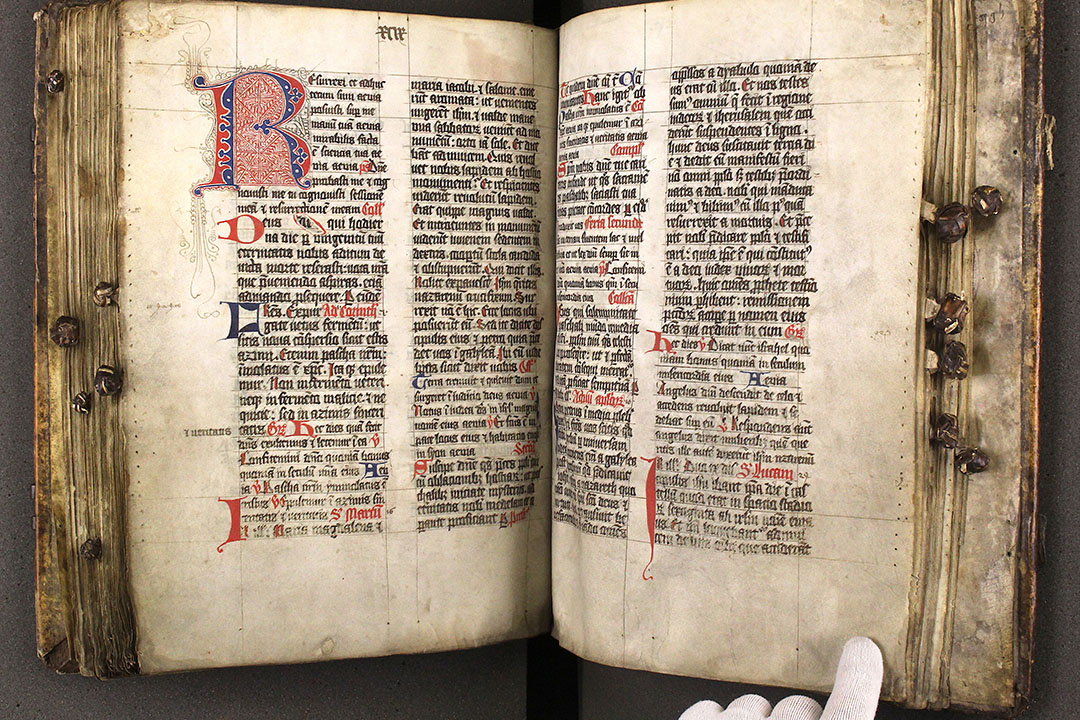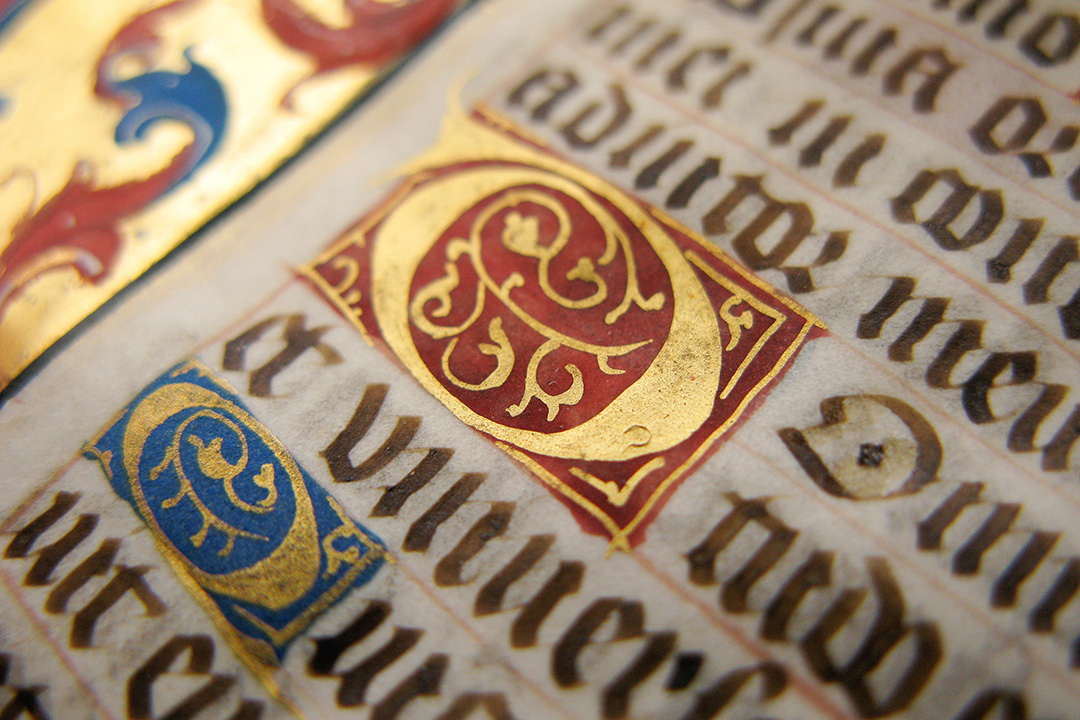
Marvelous medley of medieval manuscripts
Meticulously hand-scribed on animal skin parchment in the Middle Ages, a collection of medieval manuscripts that have withstood the test of time are on display at the University of Saskatchewan (USask).
By James ShewagaCrafted in the decades and centuries before the creation of the printing press, the university’s eclectic collection of historical texts and tomes range from one-of-a-kind missals and the ornate Otto Ege leaves, to remarkable reproductions of priceless manuscripts originally painstakingly produced by monks in monasteries across Europe.
“When you are holding the only one of its kind—something unique—it is pretty special,” said David Bindle, a librarian in University Archives and Special Collections. “You think of all the grubby little hands that have held these darkened page corners over the centuries and it makes you wonder about the people who came into daily contact with it.”
Bindle is the curator of the exquisite exhibit, The Medieval Manuscript: The Codex of the Middle Ages, on display until March 20 in the Murray Library. It features the university’s Otto Ege leaves—a package of prized pages dating as far back as the 12th century—as well as Bindle’s astute acquisition of the 550-year-old Brendan Missal, a liturgical book—in Gothic script—for celebrating daily mass. It was found in the remnants of a German church and is the oldest intact original manuscript in the university’s collection.

“There is a lot of detective work that could go into it,” said Bindle. “Inside the front cover is a list, basically an inventory of items that were found in this church dedicated to Saint Brendan, and I would love to see somebody actually locate where the church once stood. The missal has survived the generations and I am looking forward to somebody doing some real forensic inquiry on the manuscript, to see what more they can tease out of it.”
The Ege leaves are also rare remnants of the Middle Ages, 50 individual pages (leaves) from 50 different disassembled manuscripts which were placed into 40 boxes that were sold largely to libraries and museums across North America.
“Very few libraries are able to afford a complete original manuscript to look at and study, so to create a collection where you get a piece of all of these different manuscripts of different eras, that is quite something,” said Bindle. “We are one of the luckier institutions in Canada to have one these collections compiled by the medieval art historian, Otto Ege.”
Currently on display, the medieval manuscripts are also regularly accessed by USask students in classical, medieval and renaissance studies.
“We bring them out quite often,” said Bindle. “When students are able to connect with these unique pieces of history, it’s often an inspirational experience.”

